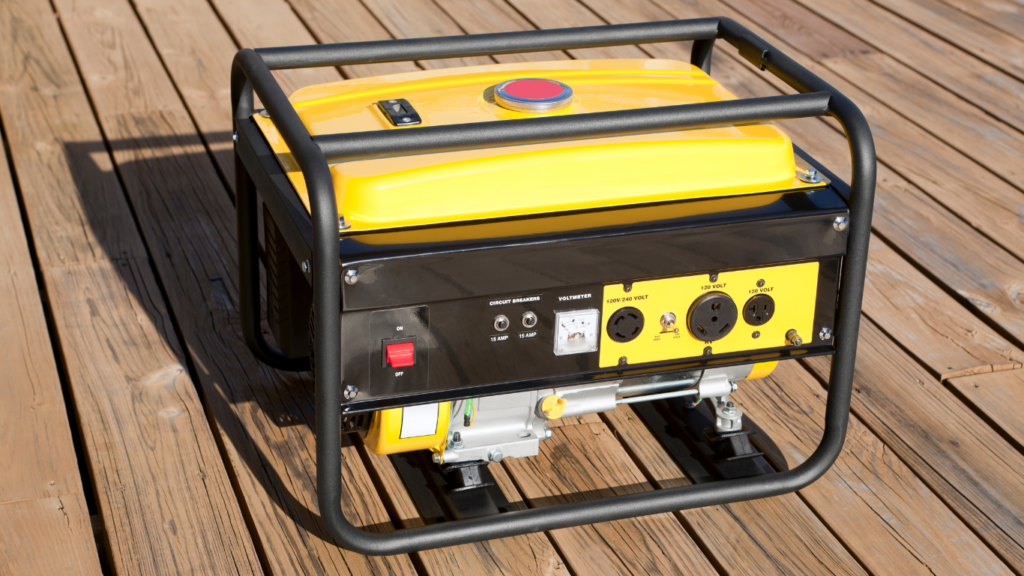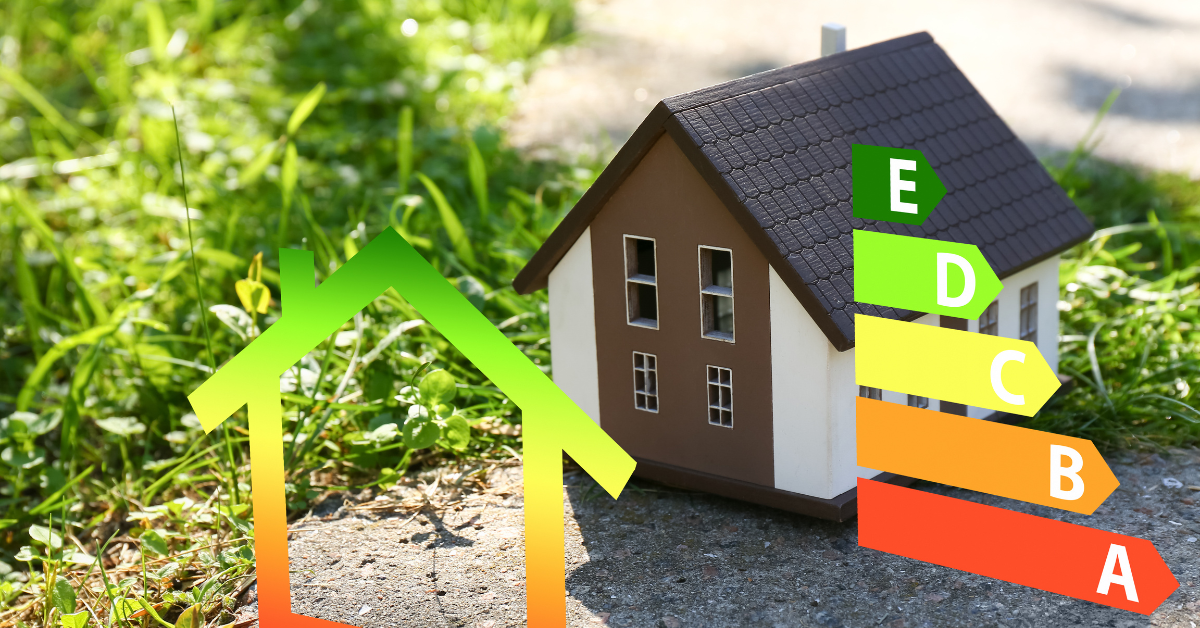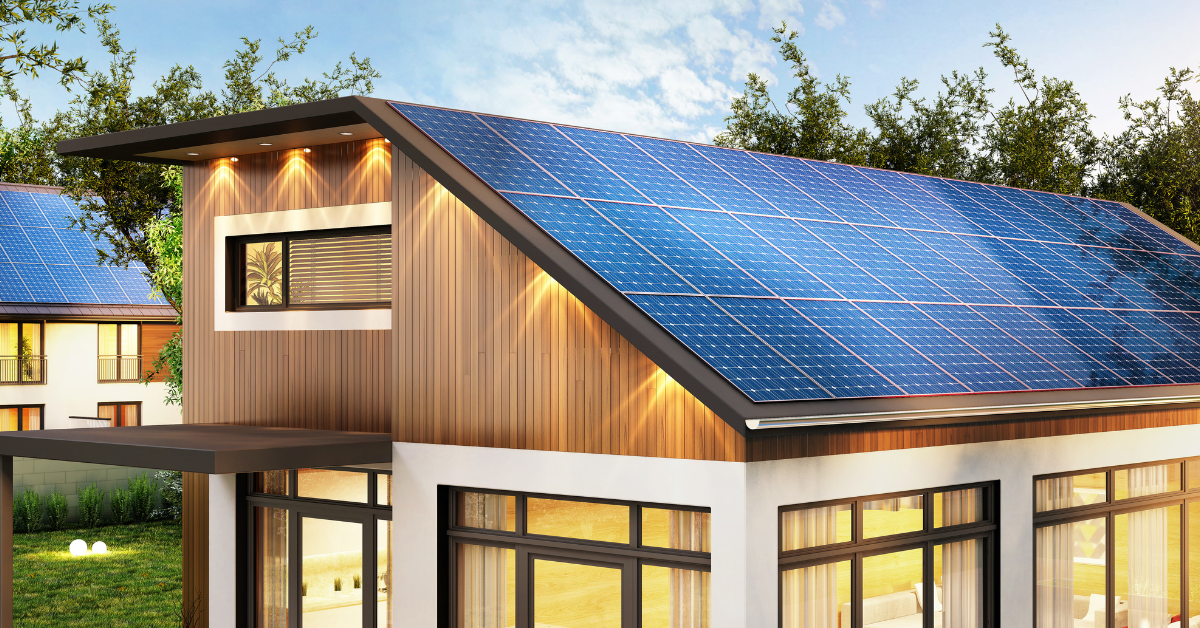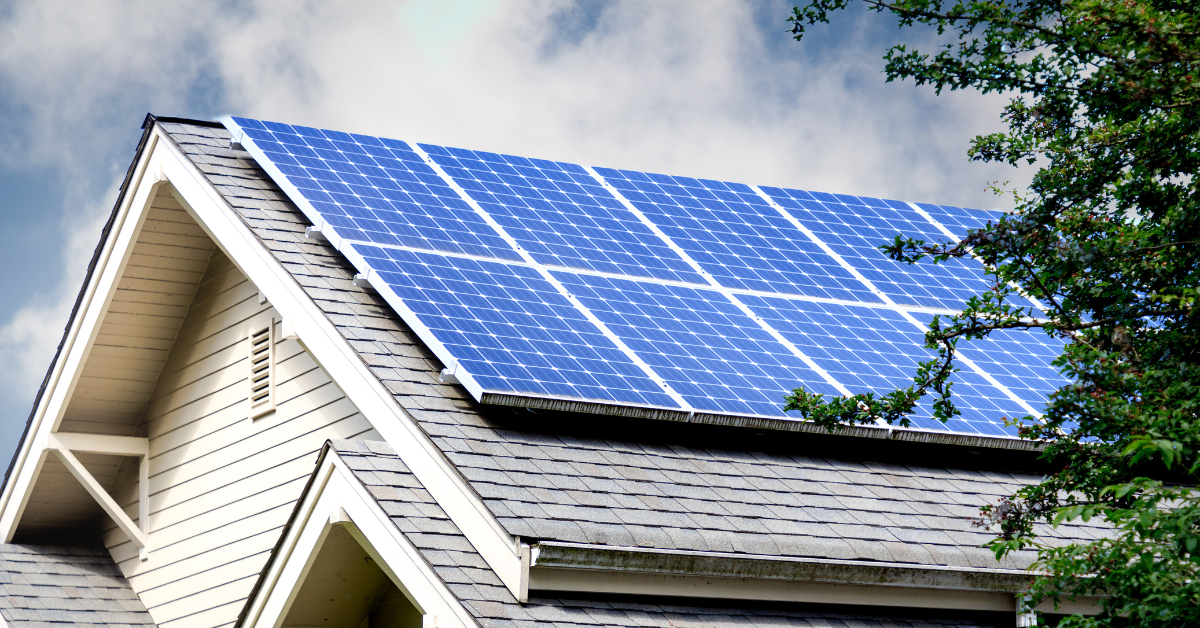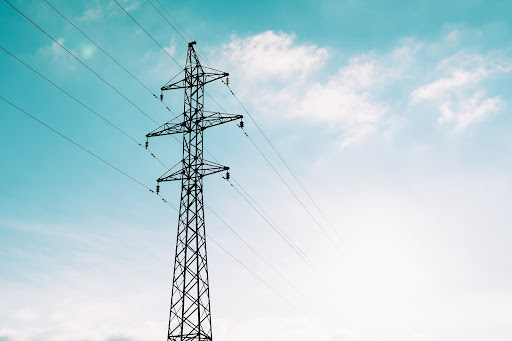With so many different types of generators available on the market…. where do you even begin?
But choosing the right generator for you doesn’t need to be a time-consuming and overwhelming task — we’ll help you find the right generator for you quickly.
Just follow the following steps and you’ll find the ideal generator for your budget and needs.
Understanding Your Electricity Needs
Understanding precisely what you’ll use the generator for and how much power you’ll need to generate is the first step to finding your perfect generator.
You could buy a generator for a variety of reasons, from providing backup power for your home or business during a brief power outage to constructing an energy-independent household which will continue to function during a long term power outage. Some people get a generator because they need to access electricity in a place where they can’t connect to the grid (for example, in the wilderness).
So you may be wondering, “how much electricity do I really need?” The truth is, each household is different.
When looking for the best generator for you, consider how many watts of electricity you will need it to generate. This is important to consider, because the higher the wattage, the more appliances you can power with your generator simultaneously. You can get a good understanding of your wattage needs by taking a look at the typical wattages of your home appliances.
Just add up the wattage of all appliances you want to simultaneously power, and you’ll know how much wattage your generator will need to produce.
What is a Generator?
Now that you have a good understanding of your electricity needs, let’s take a deeper dive into generators.
A generator is a piece of equipment that generates electricity from some type of fuel (such as natural gas or diesel). In the event that the power grid is disrupted, it will provide your electronic gadgets and home appliances with electricity, as long as you have enough fuel stored to feed the generator.
Having a generator will enable you and your family to utilize electricity off the grid.
Types of Generators
Generators produce power using a variety of techniques and fuel sources, depending on their type and design. That makes sense because generators are built for different use cases, ranging from tiny portable generators excellent for camping to huge backup generators to power businesses, hospitals, warehouses, and residences.
In this article, we’ll examine the pros and cons of inverter generators, portable generators, and whole-house generators so you can choose the best type of generator for your needs.
Inverter Generators (One of Our Favorites)
Inverter generators invert electricity, which results in cleaner and safer electricity. So if you are searching for a generator for sensitive, high-tech, or battery-powered devices, an inverter generator might be the right choice for you.
Inverters produce anywhere from 1,500 watts to 10,000 watts, which means that a large inverter could be enough for you to power your most important household appliances.
You can generally connect a large inverter generator directly to your electrical panel with a transfer switch, so that it powers your entire home circuit. This can be much more convenient than using extension cords to connect individual appliances to the generator.
Another good thing about inverter generators is that they are more efficient than other types of generators and don’t waste as much fuel. This means that you won’t have to refill the gas tank as often.
The fact that inverters are durable and require very little maintenance make them a good choice for preparing for long-term power outages and crisis scenarios, where maintenance may not be readily available.
Nowadays, you can get a good inverter generator affordably. Prices generally range from $400-$2300, You can set up parallel inverter generators for double the power output, but the main drawback is that you need to purchase two generators to do this.
Pros:
- Smaller and lighter in size
- Safer for charging high-tech gadgets
- Waste less fuel
- Less noisy
- Fewer emissions
- High quality power source
- Durable (roughly 20 years or 3,000 service hours) and require very little maintenance
Cons:
- Expensive to repair
- Generate less power
Our Favorite Inverter Generators of All Time
Pulsar PG2300iS 2,300W Portable Super Quiet Gas-Powered Inverter Generator with USB Outlet & Parallel Capability, CARB Compliant
Small — 2,300 watts
- 2300 peak watts/1800 running watts
- Powers sensitive electronics utilizing stable sine WAVE
- Low oil shut-off, recoil start, and AVR
Westinghouse 4500 Peak Watt Super Quiet Dual Fuel Portable Inverter Generator, Remote Electric Start, Gas & Propane Powered, RV Ready 30A Outlet, Parallel Capable
Medium — 4,500 watts
- 4500 peak watts/3700 Rated Watts at Less Than 3% THD
- Powered by gas or propane
- Extremely fuel efficient & quiet
DuroMax 9000 Watt Dual Fuel Portable Digital Hybrid Inverter Generator
Large — 9,000 watts
- 9,000 peak watts/7,600 running watts
- Powered by gasoline or propane
- Provides clean and stable power for sensitive electronics
Portable Generators
If you want a generator that is affordable, gets the job done, and practical – you may want to consider a portable generator. Portable generators range from $150-$3,500 (depending on the wattage), and the large ones can generate up to 17,500 watts of power! This is more power than an inverter generator can provide you with, and should be enough to plug in your important household appliances.
Because of their portable nature, portable generators are great for camping trips, construction sites, and any other use case that requires power on-the-go.
These generators tend to run on diesel, natural gas, propane, and some even run on solar!
On the downside, while portable generators are practical, they aren’t exactly a luxury item. They produce heat, noise, and other exhausts. Some can also produce toxic gasses like carbon monoxide, which could be a serious health risk. Furthermore, it is hard and expensive to connect a portable generator to your home’s circuit breaker panel, so you’ll probably be plugging in individual appliances using extension cords.
Pros:
- Great value for money
- Portable
- Emergency backup
- Can generate a lot of energy
Cons:
- Produce noise, heat, and exhausts
- Require manual start
- Risk of carbon monoxide
- Hard & costly to connect to circuit breaker panel
Our Favorite Portable Generators of All Time
PowerSmart 1200 Watts Gas Powered Portable Generator, Ultralight, EPA & CARB Compliant
Small — 1,200 watts
- 1,200 peak watts/1,000 running watts
- 2-stroke engine including a single-cylinder forced air cooling system & recoil start
Champion Power Equipment 100555 4375/3500-Watt RV Ready Portable Generator, CARB
Medium — 4,375 watts
- Safety features: has a low oil shut-off sensor and a built-in surge protector
- A full tank of gasoline will give you up to 12 hours of run time
Westinghouse Outdoor Power Equipment 12500 Peak Watt Dual Fuel Home Backup Portable Generator
Large — 12,500 watts
- Gasoline & propane-powered
- 12,500 peak watts/9,500 running watts
- Comes with a key fob & Remote Start
Whole House Generators
As the name implies, whole house generators are designed to cover the electricity needs for an entire household. These are large and stationary units that are designed to produce all the electricity you need to live comfortably. A whole house generator can produce up to 25,000 watts, which is plenty of power for most households.
Most whole house generators run on propane or natural gas.
They are somewhat of a luxury item, and will start automatically in the event of a power outage. You’ll barely even notice any disruption. Whole house generators are very reliable, consistent, and always ready to go. They are also less noisy than portable generators (but more noisy than inverters). Furthermore, whole house generators are very durable and generally last 20-40 years!
However, there are also some cons of whole house generators. For one, they are expensive. Purchasing a whole house generator will set you back $2,000-$6,500, and that isn’t considering installation costs (which are very similar to the price of the generator itself).
Also, whole house generators can take up a large amount of space outside of your house, and require regular maintenance (every 6 months – 1 year). Because of this, if you are preparing for a long-term crisis and want to be self-sufficient, a whole house generator may not be the best option, if maintenance isn’t readily available in such an emergency situation.
Pros:
- Will power your entire house (up to 25,000 watts)
- Have a long lifespan (20-40 years)
- Increase the value of your house
- Reliable 24/7
- Automatic start
Cons:
- Expensive ($2,000 – $6,500) + installation
- Bulky and take up space
- Somewhat noisy
- Require regular maintenance
Generator Fuel Types
Electricity generators can be powered by diesel, gasoline, propane, natural gas, battery, or solar energy. Certain models allow you to switch between different fuel types, granting more flexibility. Let’s examine the pros and cons of various fuel types used in generators.
Diesel
As with all other fuel types, diesel comes with some advantages and disadvantages. Diesel generators are efficient and you’ll waste less fuel. Diesel is readily available, and because it’s the least flammable fuel source, it is much safer to store than a fuel source such as gasoline. Diesel has a shelf life of about 20 months.
While diesel isn’t the cheapest fuel type, it is usually competitively priced. Running a 20,000 watt generator with diesel will usually cost you about $200 per day. Furthermore, diesel will provide you more power per gallon, so you can get away with storing a smaller amount.
If you are in a cold climate, diesel may not be the best fit for you, as it has the tendency to gel in cold temperatures.
Gasoline
While a lot of portable generators run on gasoline, most whole house generators don’t. Generators that run on gasoline are usually the most affordable generators, so your initial cost shouldn’t be so high. However, depending on your local gasoline prices, it may be a more expensive fuel in the long term. Running a 5,000 watt portable gasoline generator costs around $100 per day.
While gasoline is readily available, it’s not the best fuel type in terms of storage. It has a relatively short shelf life of 12 months (depending on storage conditions), and is highly flammable, which means storing large quantities of gasoline can be a safety hazard. Also, gasoline as a generator fuel is quite inefficient, which means that you’ll have to fill the tank more often.
Propane
Running a generator on propane costs approximately the same as on diesel – it’s not the cheapest fuel but still competitively priced. Since propane doesn’t have an expiration date, you don’t have to worry about wasting your money to replenish fuel that is past its shelf life.
- High cost to install and maintain
- Propane containers are pressurized and flammable
- Available as liquid propane (LP) or vapor propane
- Liquid propane has extremely long shelf life (virtually endless)
- Produces less engine noise
- Should never be used indoors
- Propane generators have shorter life spans
Natural Gas
Natural gas is very affordable, allowing you to spend only about $90 dollars per day to run a 20,000 watt generator.
- Widely available
- Transported to your home directly from pipelines
- Lower power output than other fuel types
- Long-lasting generator
- Relatively clean fuel
- Supply generally not affected by power outages
- Can be used indoors
- Extremely flammable
Battery
- Bigger and heavier than other generators
- Low output
- Can be combined with solar generators
- Safe and quiet for indoor usage
- Use batteries to store energy to produce electricity
- Take a long time to charge up
Solar
The great thing about using solar energy to run your generator? You don’t have to pay for this fuel type- it’s free. This eliminates the need to stockpile fuel and the safety hazard and other considerations associated with storing fuel. Solar is also the best fuel source if you want to be completely energy self-sufficient (you’ll eventually run out of other fuels, but the sun will always continue to shine).
Using solar to fuel your generator is also quiet and safe for indoor use, with no emissions. You’ll find that you have lower maintenance costs.
But of course there are also downsides:
- Limited power output and capacity
- Power output depends on number of solar panels and weather conditions
- Requires sunlight
- Bad for places without much sunlight
Big Picture
To help you choose the best generator for your specific needs, we’ve grouped the information in this blog into two tables, one for generator types and one for fuel types.
Generator Types
| Generator Type | Price | Fuel Types | Output | Lifespan | Pros | Cons |
| Whole House | $2,000 – $6,500 + installation | Natural gas, liquid propane, diesel | 5,000 to 25,000 watts | 20-40 years | Reliable, automatic, power for the entire house. | Take up space, more noisy than inverters, and high upkeep costs. Requires maintenance once or twice per year. |
| Inverter | $400 – $2,300 | Propane, natural gas, gasoline, diesel | 1,500-10,000 watts | 20 years | Quiet and efficient. Very little maintenance required. High quality power. | Lower output, relatively expensive |
| Portable | $150 – $3,500 | Natural gas, diesel, propane, solar | Up to 17,500 watts | 20 years | Affordable and portable. | Lower output than whole house, produce noise, heat, and exhausts including carbon monoxide |
Fuel Types
| Generator Fuel Type | Cost | Safety | Efficiency | Pros | Cons |
| Diesel | $4.61 per gallon | Less flammable than other fuels, outdoor use only | 30% to 41% | Good for long-term use, less flammable, efficient | Expensive, short shelf life, less effective in cold temperatures, produces emissions |
| Gasoline | $3.58 per gallon | Highly flammable, outdoor use only | 28% to 35% | Readily available, 3-year shelf life | Less effective in cold temperatures, flammable, produces emissions |
| Propane | $2.49 per gallon | Pressurized and flammable, combustible in air, outdoor use | 93% | Highly efficient, extremely long shelf life, less noisy, low emissions | Costly to install a propane generator, combustible in air |
| Natural Gas | $3.25 per gge | Extremely flammable, can be used indoors with care | 17% to 72% depending on the generator | Inexpensive, delivered to your house via pipelines, not affected by power outages | Lower output, extremely flammable |
| Battery | $10,000 to $20,000 installation cost | Safe for indoors | 95% | Quiet, cheaper over the long-term, no emissions, great for indoor use | Low output, bigger and heavier in size, costly installation cost |
| Solar | $1.50 per watt | Safe for indoors | 20% for panels and 41% for cells | Quiet, no emissions, renewable, and doesn’t require storing fuel | Expensive installation, low efficiency, slow charge time |
There are also other ways for you to ensure that your home is energy self-sufficient, and that you are prepared for any upcoming energy shortages and power outages. Check out our how To prepare for a long term power outage in 4 Steps

